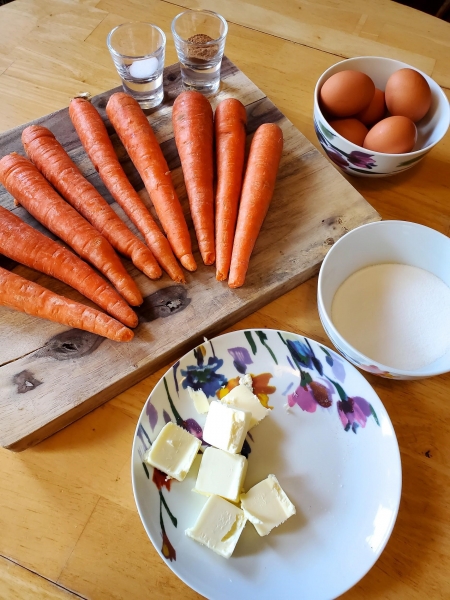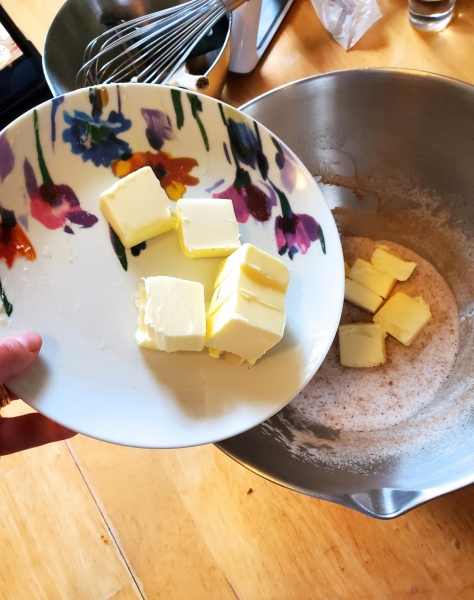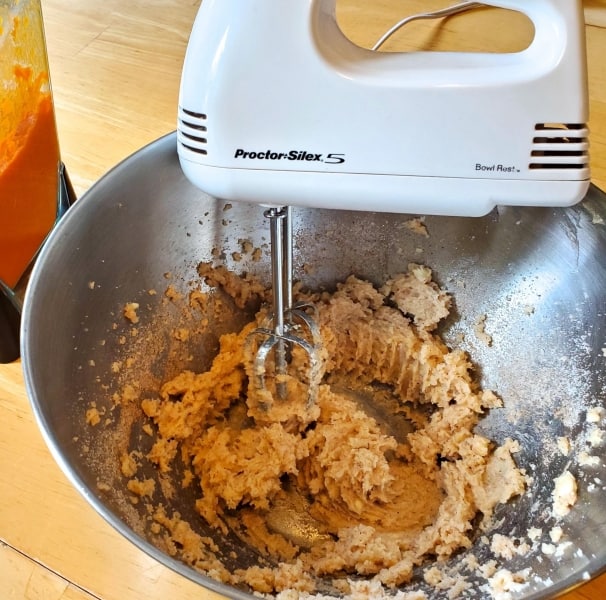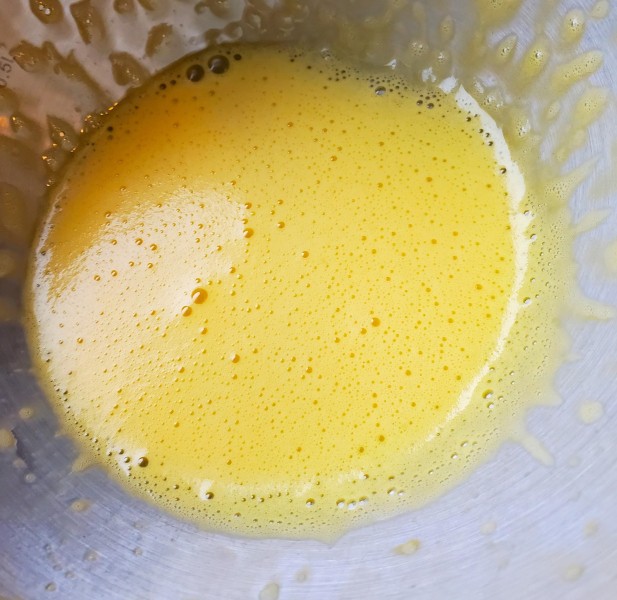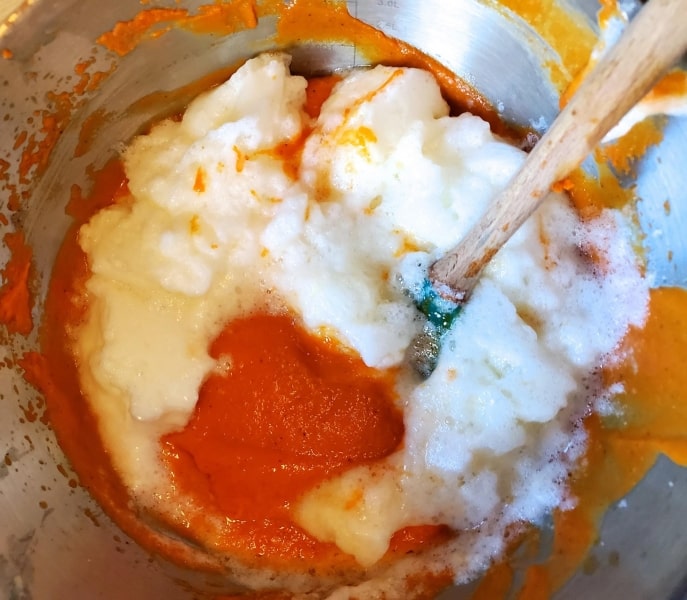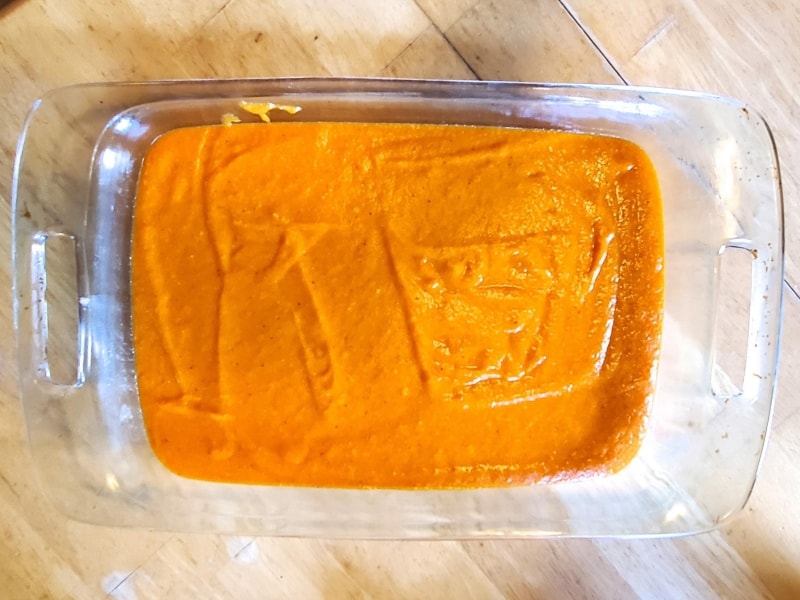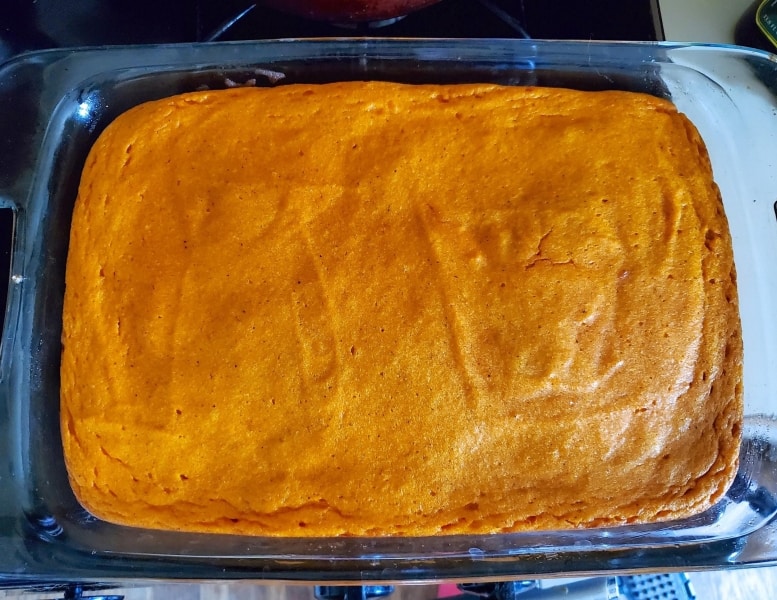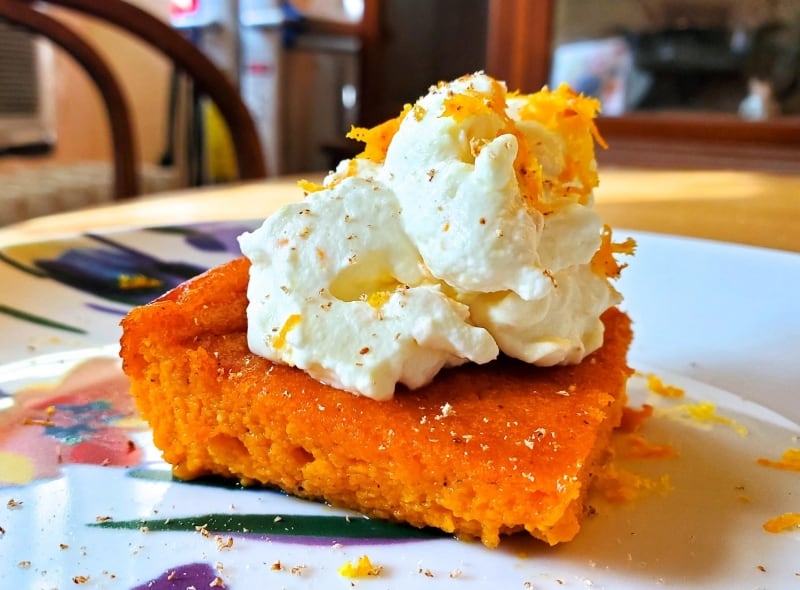A Tale of Two Puddings Part One: Carrot Pudding
Katie Maxwell, Visitor Services Coordinator
Anne Toller, Her Book Given by Mrs. Hall in the Year 1699 MS., [England, 1699], page 13, Roughwood Collection
From November 17, 1986 through April 25, 1987, the Library Company exhibited The Larder Invaded: Reflections on Three Centuries of Philadelphia Food and Drink. I will explore some Philadelphia culinary history through the exhibit’s companion book, 35 Receipts from “The Larder Invaded” by William Woys Weaver.
First up, Puddings.
I chose this carrot pudding recipe for my first adventure in culinary history because, well, I already had most of the ingredients. Here are the instructions as modernized and written in 35 Receipts (pg 12).
2 lbs. carrots, pared, trimmed and cooked
6 oz. butter*
¾ cup sugar
1 tblsp. nutmeg
1 tsp. salt
6 eggs, yolks and whites separated
8 oz currants**
*As I set out the ingredients I misread the list and interpreted six ounces of butter as six tablespoons of butter. These are not the same, the image above shows six tablespoons or about three ounces of butter.
**You will also notice that there are no currants in this picture. That is because I couldn’t find any, and while raisins can probably be substituted, I just don’t like them.
“Cook the carrots in 2 cups of water (or steam them, which is better) and drain. Puree as fine as possible in a food processor; then add the butter, sugar, nutmeg, and salt.”
A blender also works fine.
I noticed the directions don’t state if butter should be cold, room temperature, or melted. I opted to briefly cream together softened butter with the sugar, nutmeg, and salt to ensure even incorporation before adding the carrot puree (after adding additional butter that I forgot).
“When this cools, beat the egg yolks to a cream and fold into the batter.”
I opted to interpret “cream” as the point when little bubbles form and the yolks become paler in color.
“Add the currants.”
Nope.
“Beat the egg whites to a stiff froth.”
I think “a stiff froth” is the point just before soft peaks start to form.
“Fold them in and pour the batter into a buttered baking dish roughly 9 x 13 x 2 inches in size. Bake 45 minutes at 350°F.”
Here goes nothing.
“NOTE: This is best when served at room temperature soon after baking. The longer the pudding stands after it has cooled, the heavier it will become. Whipped cream sweetened with sugar and orange flower water is appropriate as a topping.”
While the pudding is in the oven, I’m making a variation on the topping described. Since I have no idea where to find orange flower water, I improvise. The book doesn’t list a recipe for the topping so I simply whip some orange zest, a cup of heavy cream and a tablespoon of sugar to stiff peaks with a hand mixer. If you happen to have a stand mixer with a whisk attachment, that will work better.
45 minutes has passed, and out comes the fully baked pudding.
It sinks down a bit after cooling to room temperature.
The final product! I sprinkled a little grated nutmeg and orange zest on top.
Not bad. A little salty for my taste, but the whipped cream balances it out well. I’ve tried it both at room temperature and chilled, and I have to disagree with Dr. Weaver. I definitely prefer it cold. The flavors have had a chance to meld, and it doesn’t taste too salty anymore. It reminds me of fall. It tastes a little bit like all those “pumpkin spice” beverages that pop up every October but don’t contain any pumpkin. It must be the nutmeg. I think this wants to be a pie. Come November, if you usually make pumpkin pie for Thanksgiving, try replacing the filling with this instead. Watch your relatives try to figure out what’s different.
Modern American puddings tend to be dairy based, and although this egg based dessert is more of a custard, it is definitely in the same family.
Next time: Blackberry Pudding. Will it still be recognizable as pudding?


